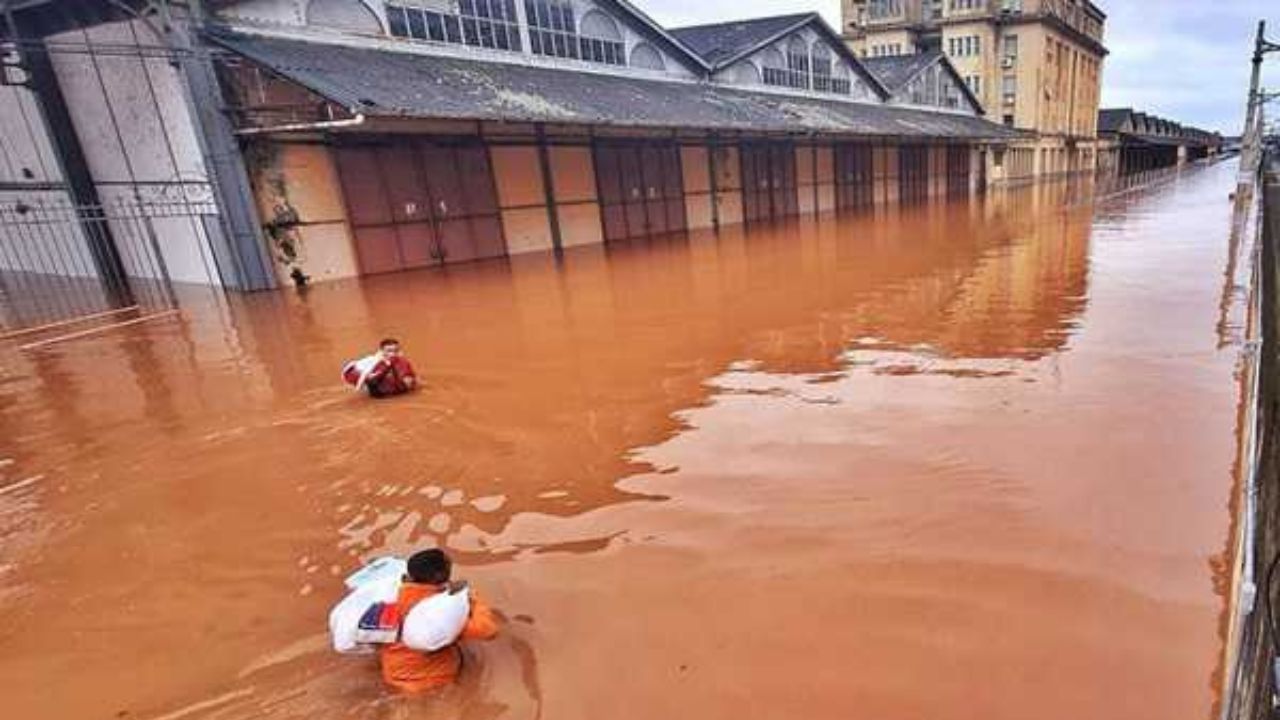Brazil Floods: Death Toll Rises To 75
Local officials in the southern state of Rio Grande do Sul, Brazil, said on Sunday that 75 people are now confirmed dead from the flooding, while over 100 individuals are still unaccounted for.

Following record-breaking floods that swept over the state, which borders Uruguay and Argentina, the state’s civil defense administration said 101 persons were missing and over 80,000 had been displaced.
75 People Have Died in Brazil’s Floods:
Over a hundred people are still missing from the floods in Brazil’s southern state of Rio Grande do Sul, and 75 deaths have now been officially confirmed, reported local officials on Sunday.
The state, which borders Uruguay and Argentina, had record-breaking floods that left more than 80,000 people homeless and 101 people missing, according to the civil defense office of the region.
Luiz Inácio Lula da Silva, the president of Brazil, and most of his cabinet came to Rio Grande do Sul on Sunday to talk with local officials about rescue and reconstruction efforts.
Rescuers are still in a battle against time to save people from mudslides and violent floods. Rescuers navigated waist-deep water in four-wheel-drive vehicles and even on jet skis as they looked for those the rising seas had left behind.
In a video Lula uploaded on the internet, a soldier is shown being dropped from a helicopter onto a house’s roof. The soldier then uses a block to pound a hole in the ceiling and rescue a baby that is covered in a blanket.
Nearly two-thirds of the 497 cities in the state have experienced storm damage, resulting in landslides, damaged roads, fallen bridges, power outages, and water shortages. Brazil’s civil defense agency said that over a million people could not access clean drinking water.
On Thursday, the Taquari River valley saw the total submersion of cities like Lajeado and Estrela underwater, and a dam at a hydroelectric plant between Bento Gonçalves and Cotiporã partially collapsed. Families with children stuck and waiting for help on roofs were constantly being rescued by helicopters over the cities.
Public Statements:
A woman expressed that she had never seen something such. Isolate Neumann told the Associated Press earlier this week, “It felt like a horror movie.” “People were building sand and gravel barricades in front of hospitals.”
Lula said last week that the floods were some of the worst Brazil has ever experienced. “This amount of rain in one place has never occurred in Brazil’s history,” he informed reporters.
The Brazilian Geological Service reports that flooding throughout the state has exceeded that of a rainstorm in 1941. The EPA also stated that water levels in several places were at their most significant since records started being kept over 150 years ago.
In Rio Grande do Sul’s city, Porto Alegre, the Guaíba River overflowed its banks, submerging surrounding streets. According to aerial pictures, residential districts in Porto Alegre were completely submerged, with just the tops of some homes showing.
People in kayaks and tiny boats crossed streets that had become rivers while others perched on roofs around the city, praying for help. The international airport in Porto Alegre halted all aircraft on Friday for an arbitrary time.
The state meteorological office stated that while rain was predicted to persist in the state’s northern and northeastern parts, precipitation has decreased and is forecast to stay below the levels observed in previous days. In several places earlier in the week, up to 150 mm (6 in) of rain occurred in a single day.
On Saturday, the state governor, Eduardo Leite, stated on social media that “river water levels should stay high for some days.” Still, he added that it was hard to predict precisely how long the situation would last.
Leite had called the floods a “critical moment” for the state earlier in the week. On social media on Wednesday, he posted, “The current event will be the worst climate disaster that our state has ever faced.”
Rio Grande do Sul’s location at the geographic intersection of the tropical and polar atmospheres results in a weather pattern alternating between heavy rain and drought. According to local experts, the trend has been becoming worse because of the climate problem caused by human activity.
An extratropical storm struck Rio Grande do Sul in September, causing floods that claimed over 50 lives. The cyclone appeared after almost two years of severe drought, during which the area saw little downpours.


Comments are closed.